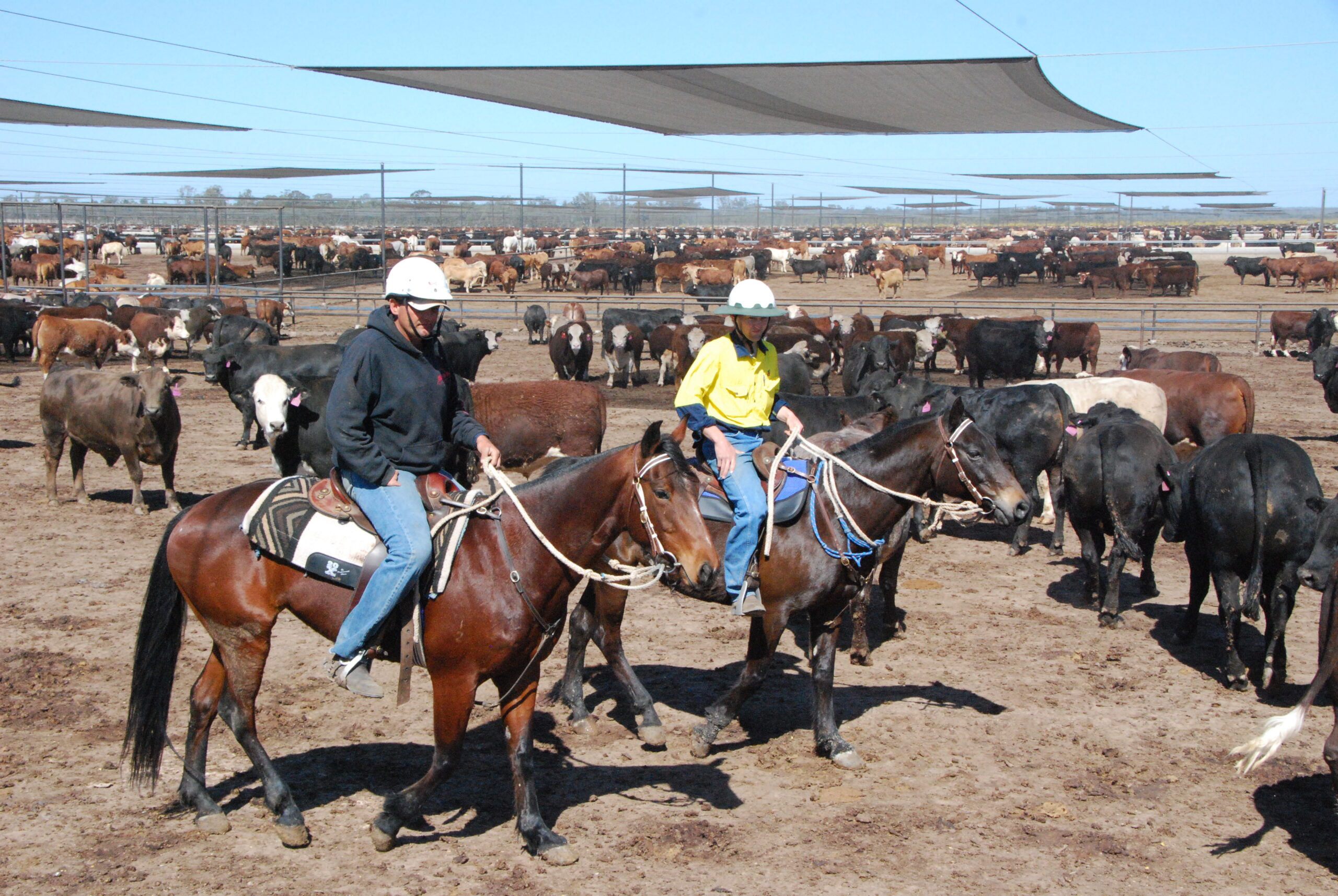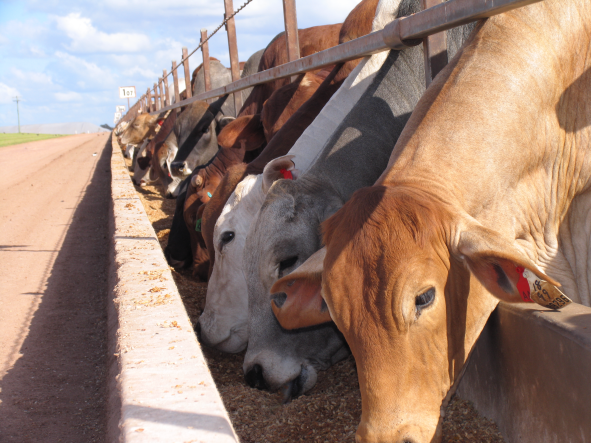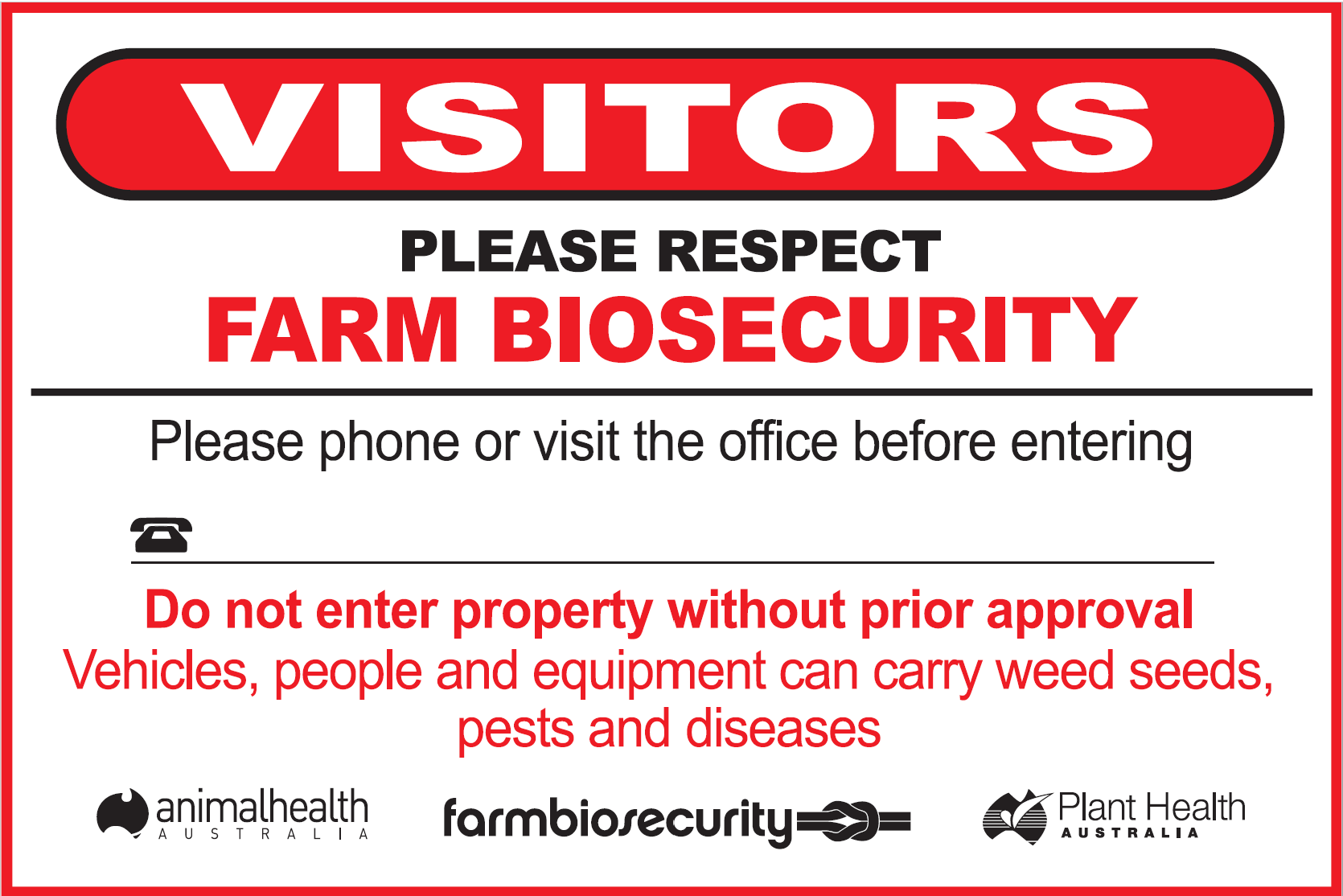Beef cattle feedlots
The beef cattle feedlot industry contributes approximately $4.6 billion to the Australian economy and employs some 28,500 people directly and indirectly (Australian Lot Feeders’ Association 2022).
There are around 400 accredited feedlots throughout Australia. The majority of those are in areas that are in close proximity to cattle and grain supplies. Queensland has the most cattle in feedlots (60%), followed by New South Wales with 30%, Victoria with 7%. Western Australia and South Australia share the remainder.
The feedlot sector has grown over the past 20 years. The ability to deliver consistent quality and quantity (regardless of seasons) has strengthened both domestic and international markets. Approximately 40% of Australia’s beef supply and 80% of beef sold in domestic supermarkets is sourced from the feedlot sector.
Two thirds of Australia’s beef production is exported to over 100 international markets. Australia’s hard won reputation as a supplier of ‘clean, green, disease free’ beef is backed by strong industry systems. These factors set us apart in the highly competitive markets in which we operate.
The Australian Lot Feeders’ Association is the national industry organisation. Meat & Livestock also provides feedlot and beef market updates, trends and analysis. Feedlots are accredited under the National Feedlot Accreditation Scheme.
Regardless of location, the National Guidelines for Beef Cattle Feedlots in Australia, is a helpful document for all feedlot managers and operators.
Feedlots are complex businesses.
On this page we provide links to information regarding:
Feedlot design and waste management | Health and welfare
Animal nutrition | Feedlot management
Methane emission reduction | Biosecurity
Feedlot design, construction and waste management

As feedlots require bringing large numbers of animals together, naturally, large amounts of manure accumulate. The concentration of nutrients contained in the effluent can have considerable impacts on the environment, and therefore, requires careful management. However, when done correctly, stockpiled manure can be used as fertiliser. Meat & Livestock Australia has produced a helpful guide to waste management and utilisation.
The National Beef Cattle Feedlot Environmental Code of Practice (PDF, 450KB) discusses considerations that need to be made to address risk factors associated with environmental impact. These include location of the site, design, construction and operation of a beef cattle feedlot. It outlines a number of activities that should prevent or at the very least minimise adverse impacts on environmental values.
Information regarding environmental legislation and regulation of cattle feedlots in Queensland can be found here.
Animal health and welfare
Ensuring high standards of animal welfare is the responsibility of everyone who works at a feedlot.
The Australian Animal Welfare Standards and Guidelines for Cattle stipulates that ‘cattle management’ includes:
- understanding the standards and guidelines for cattle welfare
- obtaining knowledge of relevant animal welfare laws
- understanding cattle behaviour and use of low stress stock handling techniques
- planning and undertaking actions for the enterprise to meet the welfare standards and address contingencies that may arise
- assessing the quantity, quality and continuity of feed and water supply
- handling to minimise stress, and using handling aids, facilities and other equipment appropriately
- undertaking hygienic practices for husbandry procedures in a manner that minimises the risks to cattle welfare
- understanding and following chemical and drug treatment instructions for cattle
- identifying distressed, weak, injured or diseased cattle, and taking appropriate action
- maintaining appropriate records
- knowledge of local patterns of disease and disease prevention
- humanely killing cattle by appropriate methods, or seeking the assistance of someone who is capable and equipped to kill them humanely.
Common health and welfare challenges cattle in feedlots face, include (but are not limited to):
Beef cattle feedlot nutrition
Demands on feedlot cattle for production and economic performance require a balanced, nutritious diet be fed. Common diet components include sorghum, maize, wheat, barley, triticale, oats, legumes, hay, silage and molasses, just to name a few.
Formulation of the diet depends on the beast’s nutrient requirements for a desired level of performance, the nutrient content of feeds and the price and availability of the feed. The majority of feedlots feed high grain diets, normally with roughage and a number of additives, fed as a premix. A grain/roughage diet can generally be fed at 75:25 to 80:20, giving satisfactory weight gains at minimum risk, although this ratio can vary from 50:50 to 90:10. After the initial induction into the feedlot, the ration gradually changes, increasing the amount of grain and decreasing the amount of roughage. Read more about diet formulations.
If access to traditionally used grains is unobtainable, there are a number of high energy alternatives that can be used instead. These include cassava, commercial food waste, fats, oils, and more. Read High-energy feed alternatives for the feedlot industry (PDF, 296KB) from Meat & Livestock Australia.
Beef cattle feedlot management

Four distinct factors impact feedlot profitability:
- buying price of store cattle
- selling price of finished cattle
- cost of the diet
- cattle performance, as influenced by management.
Chapter 9 of the Feedlot design manual states:
“Following the USA example, feedlots in Australia initially stocked pens at about 10 m2/head but experience has shown that this stocking density is appropriate only in drier zones (annual rainfall <500 mm/year). For most feedlots in the grain belt, a stocking density of about 15 m2/head achieves an optimum outcome for cattle, pen environment and pen maintenance.”
Methane emission reduction
The feedlot is the ideal environment in which to undertake methane emission reduction practices. Although still in the early stages of commercial product development the results of scientific trials are promising. Two of particular note are Asparagopsis feedlot feeding trial results, and Methane emissions of Australian feedlot cattle as influenced by 3-Nitrooxypropanol (Bovaer-10).
Readers may find this article from BeefCentral (13 September 2022) of interest: Seaweed feed-additives could soon be earning carbon credits.
Biosecurity at beef cattle feedlots

Biosecurity is a priority for all primary production enterprises in Australia. A good biosecurity plan needs to take into account both reducing the risk of introducing a pest, disease or weed, as well as minimising the spread of a pest, disease or weed. The National Biosecurity Manual for Beef Cattle Feedlots is just one of the many free resources available from Farm Biosecurity.
Additional useful links
- National Guidelines for Beef Cattle Feedlots in Australia – available to purchase from CSIRO Publishing
- National Livestock Identification System (NLIS) in the Northern Territory
- NLIS and identification – cattle and buffalo in Western Australia
- NLIS in Queensland
- Australian Animal Welfare Standards and Guidelines website
- Lotfeeding and intensive finishing, Meat & Livestock Australia
- Undertaking intensive animal industries, Department of Agriculture and Fisheries
Multimedia
Feedlot industry investment
In this webinar David Brown, West Talgai Feedlot (Queensland) discusses feedlot industry investment – giving a practical view of production, management and financial economics of lotfed cattle. 35:41 minutes published 19 February 2012 by FutureBeefAu.